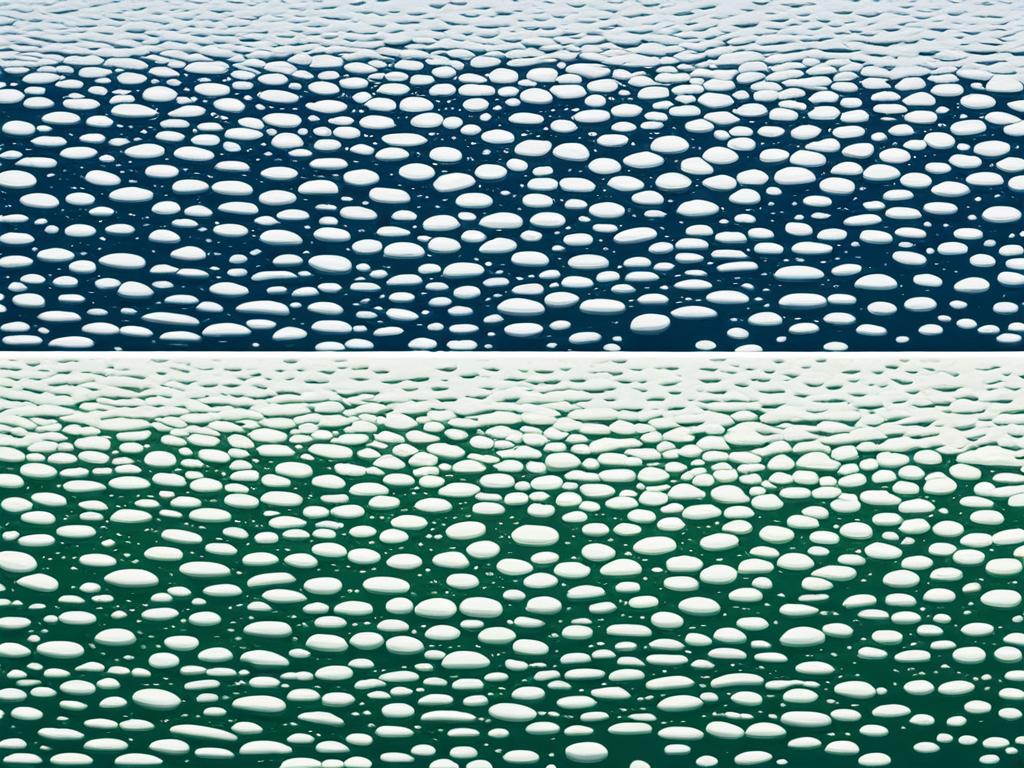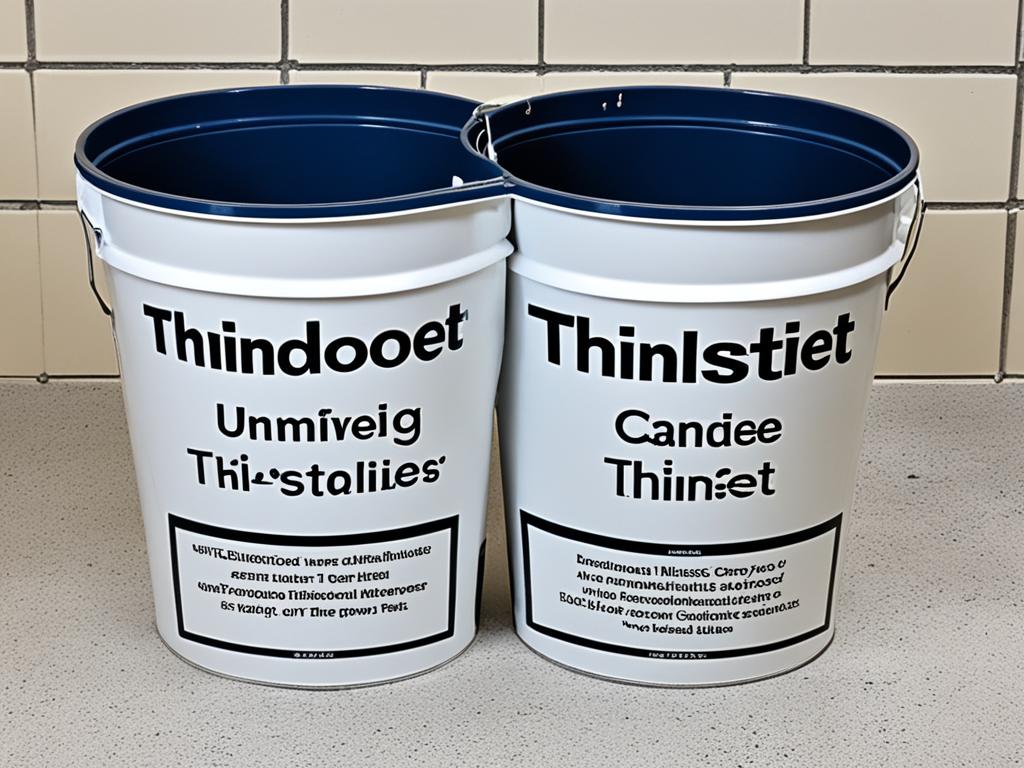When it comes to choosing the right adhesive for your tile installation project, understanding the differences between unmodified and modified thinset is crucial. Both options have their advantages and specific use cases, so let’s take a closer look at what sets them apart.
Key Takeaways:
- Unmodified thinset is a traditional option made of Portland cement, sand, and water retention agents.
- Modified thinset includes latex polymers, enhancing its performance and strength.
- Modified thinset offers improved ease of use and durability.
- Consider factors such as application requirements, water retention, and curing process when choosing between the two.
- Ansi standards classify thinset, and manufacturer recommendations play a crucial role in selecting the right product.
How Does Water Retention Impact Thinset Curing?
The hydration reaction in concrete plays a crucial role in the curing process of thinset. When water is added to Portland cement, a chemical reaction called hydration occurs, resulting in the formation of crystals that make the cement hard. These crystals continue to grow as long as they are exposed to moisture.
Water retention is essential for maintaining a high moisture level in the cement, as it ensures the gradual increase in strength, density, and durability of the thinset. The hydration reaction, facilitated by the presence of water, contributes to the overall curing process, allowing the thinset to harden and form a solid bond with the tile and substrate.
Modified thinset, with its additional retention products, offers enhanced water retention capabilities, leading to a stronger concrete cure. The incorporation of latex polymers in modified thinset enhances its ability to hold water and keep the cement hydrated for an extended period.
“Water retention is crucial for the proper curing of thinset. It helps in maintaining a moist environment that allows the cement to reach its maximum strength and durability.”
However, the use of unmodified thinset is still prevalent in certain applications. In specific conditions, unmodified thinset can provide sufficient water retention, ensuring an adequate curing process. It is crucial to consider factors such as the environment, project requirements, and the expected load and stress on the tile installation before selecting the appropriate thinset.
The Impact of Water/Cement Ratio on Thinset Porosity
The water/cement ratio in the thinset mixture is a critical factor that directly affects the porosity of the cured material. A higher water/cement ratio results in a more porous thinset, making it more susceptible to moisture absorption and potential damage.
Excessive water in the thinset mix can weaken the structure of the cured material, leading to decreased strength and increased vulnerability to cracks and deterioration over time. Therefore, it’s crucial to follow manufacturer recommendations and maintain an optimal water/cement ratio to ensure the long-term performance and durability of the tile installation.

Choosing the Right Thinset for Your Project
When it comes to selecting the appropriate thinset for your tile installation project, there are several key factors to consider. One important aspect is the classification of thinset based on ANSI standards. Unmodified thinset typically meets the ANSI A118.1 standard, while modified thinset may adhere to additional standards such as A118.4, A118.11, or A118.15. Understanding these classifications can help you make an informed choice.
Furthermore, manufacturers often provide recommendations for specific products. For example, Schluter, a renowned tile installation systems manufacturer, may specify the recommended thinset for their products, such as Schluter membranes. It’s important to follow these guidelines to ensure optimal performance and durability.
Another consideration is the type of project you are undertaking. If you are working with large format tiles, it is crucial to choose a thinset that is specifically formulated and approved for such installations. This will help ensure proper adhesion and prevent issues such as cracking or shifting over time.
Additionally, if you are installing tiles over a plywood subfloor, it is necessary to use a modified thinset. Plywood can absorb moisture, which can lead to weakness and damage. A modified thinset, with its enhanced moisture resistance, helps prevent this problem and ensures a stable tile installation.
